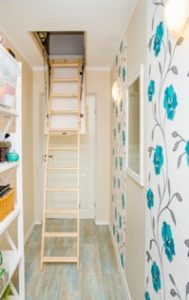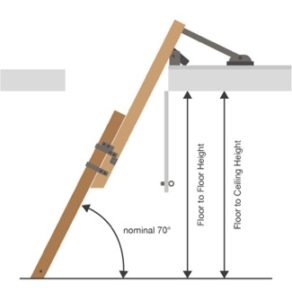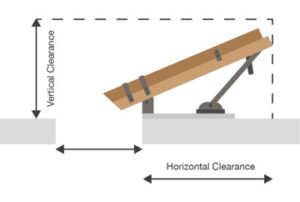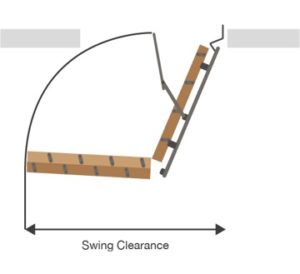When installing a new loft ladder, it is important to correctly measure the dimensions so your ladder fits into the space available.

To help you, we have created an easy step-by-step guide to ensure you get it right the first time around.
Before you start to measure the area, you must choose a type of ladder, the most common types are folding ladders and sliding ladders. Sliding ladders are bulkier and hold less weight so are good for those who use their loft space as storage. However, if you plan on using your loft regularly or have less space to store the ladder, a folding ladder is a better option.
It is also a good idea to decide what material you want to use for your loft ladder. Generally, the choice is between timber and aluminium. Aluminium is lighter however as a result they hold less weight, look more industrial and are loud when moving the ladder.
Timber ladders, on the other hand, are sturdier so can withstand greater weights while having a more traditional look. It is important to note most timer ladders are folding ladders while aluminium is more suited to the sliding style.
1. Measure the Height – Measuring the height of the ladder requires different measurements for the different types of ladder. For a folding ladder, you should measure from the floor of the landing to the ceiling of the landing (known as a floor-to-ceiling measurement). For sliding ladders, you should measure from the floor of the landing to the floor of the loft space (known as floor-to-floor measurement) – remember to note the thickness of the floor board in the ceiling while doing this.

2. Opening Dimensions – Next, you need to measure the dimensions of the opening the ladder will be fitting into. To do this you need to measure the length and width of the opening, making note of any joists and potential obstructions. If you want a hatch with your ladder, you need to make sure you have an extra 100mm per side compared to the hatch dimensions.
3. Vertical and Horizontal Clearance – This is important for sliding ladders but it’s also good to check for folding ladders. To measure the vertical clearance, you should measure the distance between the loft floor and loft ceiling. The horizontal clearance is measured from the end of the opening in the loft to the nearest obstruction. This step ensures there is enough space in the loft for the ladder to fit in and move around.

4. Swing Clearance – It is essential to measure the swing clearance for folding ladders as it may prevent the ladder from folding out and damage the walls. The swing clearance is measured from perpendicular to the ladder hinge to the nearest wall or obstruction. At this point you can also measure from the same point to where the ladder lands however this will always be less than the swing clearance.

Once you have decided on the type of loft ladder you want and have measured the space you will need, it is time to install your ladder. At LB Roof Windows, we have a great range of timber loft ladders to suit your needs. Don’t hesitate to contact us for advice and recommendations.